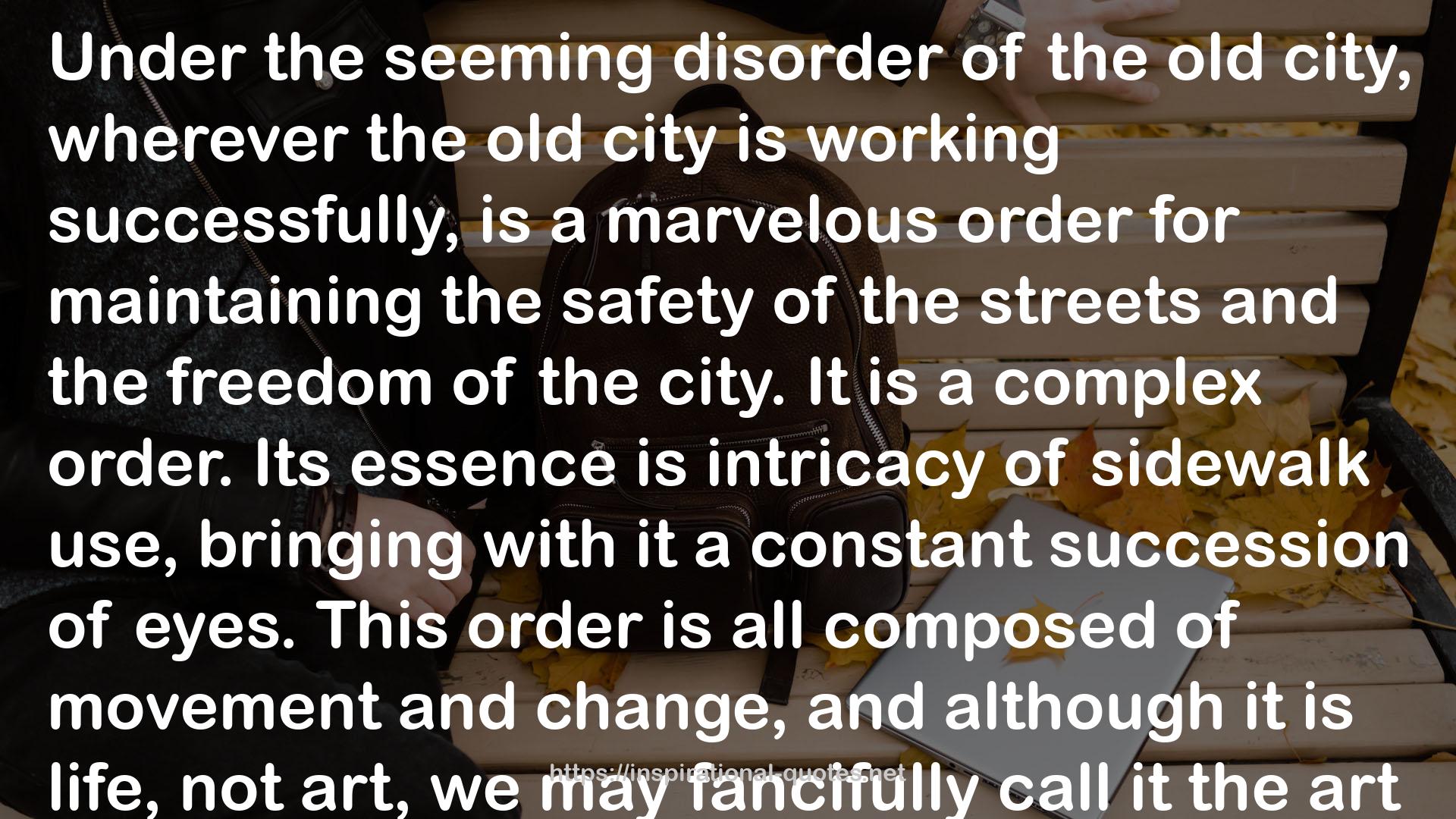" Under the seeming disorder of the old city, wherever the old city is working successfully, is a marvelous order for maintaining the safety of the streets and the freedom of the city. It is a complex order. Its essence is intricacy of sidewalk use, bringing with it a constant succession of eyes. This order is all composed of movement and change, and although it is life, not art, we may fancifully call it the art form of the city and liken it to the dance — not to a simple-minded precision dance with everyone kicking up at the same time, twirling in unison and bowing off en masse, but to an intricate ballet in which the individual dancers and ensembles all have distinctive parts which miraculously reinforce each other and compose an orderly whole. The ballet of the good city sidewalk never repeats itself from place to place, and in any once place is always replete with new improvisations. The stretch of Hudson Street where I live is each day the scene of an intricate sidewalk ballet. I make my own first entrance into it a little after eight when I put out my garbage gcan, surely a prosaic occupation, but I enjoy my part, my little clang, as the junior droves of junior high school students walk by the center of the stage dropping candy wrapper. (How do they eat so much candy so early in the morning?) While I sweep up the wrappers I watch the other rituals of the morning: Mr Halpert unlocking the laundry's handcart from its mooring to a cellar door, Joe Cornacchia's son-in-law stacking out the empty crates from the delicatessen, the barber bringing out his sidewalk folding chair, Mr. Goldstein arranging the coils of wire which proclaim the hardware store is open, the wife of the tenement's super intendent depositing her chunky three-year-old with a toy mandolin on the stoop, the vantage point from which he is learning English his mother cannot speak. Now the primary childrren, heading for St. Luke's, dribble through the south; the children from St. Veronicas cross, heading to the west, and the children from P.S 41, heading toward the east. Two new entrances are made from the wings: well-dressed and even elegant women and men with brief cases emerge from doorways and side streets. Most of these are heading for the bus and subways, but some hover on the curbs, stopping taxis which have miraculously appeared at the right moment, for the taxis are part of a wider morning ritual: having dropped passengers from midtown in the downtown financial district, they are now bringing downtowners up tow midtown. Simultaneously, numbers of women in housedresses have emerged and as they crisscross with one another they pause for quick conversations that sound with laughter or joint indignation, never, it seems, anything in between. It is time for me to hurry to work too, and I exchange my ritual farewell with Mr. Lofaro, the short, thick bodied, white-aproned fruit man who stands outside his doorway a little up the street, his arms folded, his feet planted, looking solid as the earth itself. We nod; we each glance quickly up and down the street, then look back at eachother and smile. We have done this many a morning for more than ten years, and we both know what it means: all is well. The heart of the day ballet I seldom see, because part off the nature of it is that working people who live there, like me, are mostly gone, filling the roles of strangers on other sidewalks. But from days off, I know enough to know that it becomes more and more intricate. Longshoremen who are not working that day gather at the White Horse or the Ideal or the International for beer and conversation. The executives and business lunchers from the industries just to the west throng the Dorgene restaurant and the Lion's Head coffee house; meat market workers and communication scientists fill the bakery lunchroom. "
Image for Quotes
